
HPS to LED Conversion Calculator: High Pressure Sodium to LED | Access Fixtures
This High-Pressure Sodium (HPS) to LED Conversion Calculator will assist in determining the required LED wattage for a new LED luminaire to achieve visual equivalent lumens (VELS). The calculator helps assess the efficiency and financial implications of their existing lighting system. Visual equivalent lumens are based on the average lumen output of the currently installed HPS lamp in an existing luminaire after taking in photopic and scotopic aspects of the HPS and LED Kelvin. Explanations of all terms are listed below the calculator and if you have questions, you can always ask an Access Fixtures Lighting Specialist.
| High Pressure Sodium (HPS) Lamp Watts | |
| High Pressure Sodium System Watts | |
| Lamp Mean Lumens | |
| Scotopic/Photopic (S/P) Ratio | |
| Visual Equivalent Lumens (VELs) | |
| LED Replacement S/P Ratio | |
| LED Replacement Calculation | |
| Current Luminaire Efficacy | |
| Mean Luminaire Lumens | |
| LED Fixture Lumens Per Watts | |
| LED Mean Lumnaire Equivalent | |
| Equivalent with Maintenance Factor (MF) | |
| LED Energy Savings |
Understanding High Pressure Sodium (HPS) Lighting
High Pressure Sodium (HPS) lighting is a type of high-intensity discharge (HID) lighting that uses an electric arc to produce light. HPS lamps are widely used in outdoor and industrial lighting applications due to their high lumen output and long lifespan. These lamps are particularly favored for street lighting, parking lots, and large outdoor areas where powerful illumination is required.
However, HPS lighting comes with several drawbacks. One of the primary concerns is its high energy consumption. HPS lamps require a significant amount of electricity to operate, which can lead to increased electricity costs. Additionally, HPS lighting is known for its poor color rendering, often producing a yellowish light that can distort the appearance of objects and surroundings.
Another critical issue with HPS lamps is their environmental impact. These lamps contain toxic materials such as mercury and lead, which pose significant health and environmental risks if not disposed of properly. The limited lifespan of HPS lamps also means they need to be replaced more frequently, contributing to waste and environmental degradation.
LED Lighting Basics
LED (Light Emitting Diode) lighting represents a modern and efficient alternative to traditional lighting sources. LEDs are a type of solid-state lighting that uses semiconductors to produce light. When an electric current passes through the semiconductor material, it releases energy in the form of light. This process is highly efficient, making LEDs one of the most energy-saving lighting options available.
LED lights are renowned for their long lifespan, often lasting several times longer than traditional light sources like HPS lamps. This longevity reduces the need for frequent replacements and maintenance, offering significant cost savings over time. Additionally, LEDs are available in a wide range of colors and can be easily dimmed to adjust light levels, providing greater flexibility in lighting design.
One of the most significant advantages of LED lighting is its environmental friendliness. Unlike HPS lamps, LEDs do not contain toxic materials such as mercury and lead, making them a safer choice for both the environment and human health. The energy efficiency of LEDs also contributes to lower electricity consumption, further reducing their environmental impact.
HPS to LED Conversion Calculator Lighting Terms
High Pressure Sodium (HPS) Lamp Watts
What is the wattage of the current High Pressure Sodium light bulb you are using? Please select it from the drop-down list provided.
High pressure sodium light bulbs are available in a range of wattages, spanning from approximately 35 watts for smaller bulbs utilized in streetlights or security lighting, to 1000 watts for larger bulbs employed in high bay lighting or outdoor area lighting fixtures. The wattage of your high-pressure sodium light bulb can typically be determined by examining the base or ends of the bulb or by locating the information on the light fixture itself.
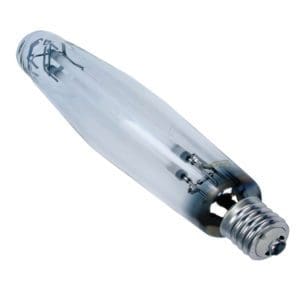
System Watts
HPS light fixtures have a lamp (light bulb) and a ballast. The ballast converts the electrical voltage supplied to power that ignites and keeps the lamp on. System watts is the combined wattage of the lamp and the electricity used by the ballast. The most common answer is provided.
Lamp Mean Lumens
High Pressure Sodium lamps, like all lamps, suffer lumen deprecation. When a HPS lamp is new, the lamp emits more light than when the lamp is 40% or more through the lamp’s average life. Mean lumens is the recognized or design lumens emitted. It is the average lumens emitted by the lamp over the life of the lamp.
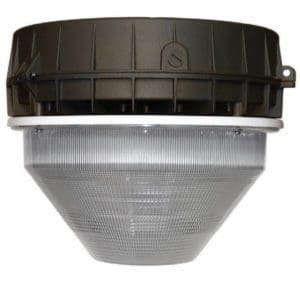
Scotopic/Photopic (S/P) Ratio
The scotopic/photopic ratio, or S/P ratio, is a ratio or multiplier that measures how much of the light emitted is useful or visible to the human eye. Useful lumens are known as visually effective lumens or VELs. A light source with a higher S/P ratio, like one using 5700K LEDs, will provide superior visibility including better color rendering. For more information on Scotopic/Photopic Ratios, click here,
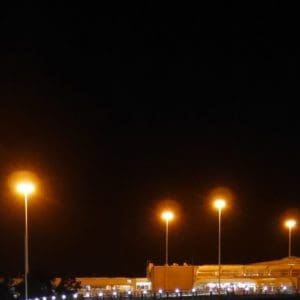
Visual Equivalent Lumens (VELs)
Visually effective lumens or VELs are calculated by multiplying the lumens supplied by the light source times the appropriate S/P Ratio.
LED Replacement S/P Ratio
Every light source has a S/P ration even if the S/P Ratio is 1.00. This part of the calculation applies the S/P ratio to the new LED light source. Each LED Kelvin has a respective S/P Ratio. Select the Kelvin of your new LED light source and the calculator will use the correct S/P Ratio.
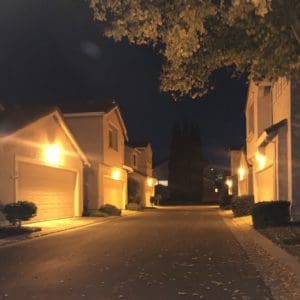
LED Replacement Calculation
This calculation is the LED lumens supplied times the S/P Ratio
Luminaire Efficacy
HPS luminaires (light fixtures), have optics in the form of reflectors, refractors and/or lenses that enhance the light emitted from the lamp and aid in directing the light emitted from the lamp. While some optics try to increase the light emitted, most maintain or reduce the light emitted. Also, due to the luminaire design, some light may simply be blocked from getting out. Luminaire efficacy is a measure of the percentage of lamp lumens the are emitted from the luminaire. The luminaire efficacy default selection is 80%. If you want a more accurate luminaire efficacy percentage recommendation, speak with an Access Fixtures Lighting Specialist.
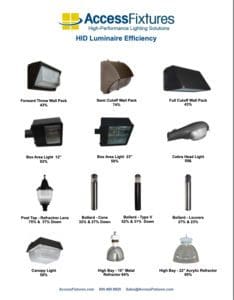
Mean Luminaire Lumens
Mean luminaire lumens is the average VELs emitted by the HPS lamp installed in the luminaire. The calculation is done by multiplying HPS lamp mean VELs by the efficacy of the luminaire.
LED Fixture Lumens Per Watt
When purchasing a LED luminaire, LED Fixture Lumens per Watt information should be provided. The performance factors that you want are system watts and LED Fixture Lumens per Watt. System watts is the total wattage of the LEDs based on the mA provided by the LED driver and the wattage used by the LED driver. There is also a difference between LED lumens and luminaire lumens. LED lumens is the lumens per watt of the LEDs. Just like legacy luminaires, the lamp lumens are not the same as the luminaire lumens. Luminaire lumens is the lumens emitted by the LEDs installed in the luminaire. The information that you ultimately want is LED Fixture Lumens per Watt. That is LED Luminaire Lumens divided by LED System Watts. Again, this should be provided, but be sure that you are getting the correct information. It should be noted that LED Luminaire Lumens and consequently LED Luminaire Lumens per Watt will be lower when using lower Kelvin LEDs.
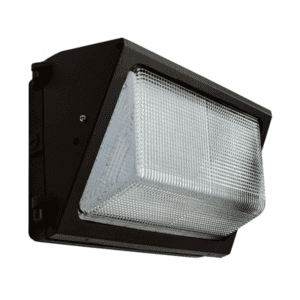
If you are planning on using a LED retrofit lamp in an existing fixture, the math may be somewhat different. If the luminaire has a lens, the efficacy of the LED retrofit efficacy will be significantly lowered. This is due to how LEDs lose efficacy when the light is transmitted through glass. For example, LED retrofit light loss of LED light transmitted through prismatic glass is approximately 30%. Speak with an Access Fixtures lighting specialist to know your options and to determine your best solution.
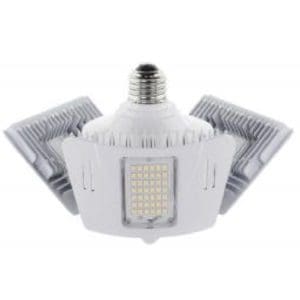
LED Mean Luminaire Equivalent
This is calculated by dividing the HID Mean Luminaire VELs by the LED Luminaire Lumens per Watt. It provides the mean. equivalent wattage before adjusting for the Maintenance Factor.
Equivalent with Maintenance Factor (MF)
Like legacy luminaires, LED luminaires have lumen depreciation too. While lumen loss is much less and takes place over a greater time, lumen loss must be taken into consideration to ensure sufficient light for the tasks to be performed. A calculation is required that is similar to HID Mean Lamp Lumens. LED luminaires have an L70 rating such as L70 @ 100,000 Hours. That means that over 100,000 hours of use the lumens emitted will decline to 70% of the original light emitted by the LED luminaire. While that is a long time, time passes. Enough light when new may not or will not be enough light later. Access Fixtures lighting engineers recommend that a MF of 20%. be added to maintain sufficient lumens for the task.
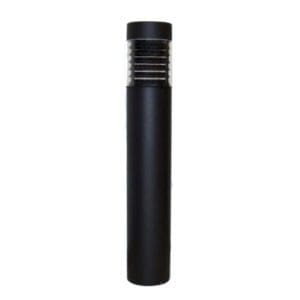
LED Energy Savings
LED Energy Savings is a comparison of the HPS system watts used as compared to the LED system watts.
Benefits of LED Conversion
Converting from High Pressure Sodium (HPS) to LED lighting can bring numerous benefits, including:
-
Energy Savings: LEDs use significantly less energy than HPS lamps to produce the same amount of light, resulting in substantial energy savings. This reduction in energy consumption can lead to lower electricity costs and a smaller carbon footprint.
-
Longer Lifespan: LEDs have a much longer lifespan compared to HPS lamps. This extended lifespan means fewer replacements and less maintenance, translating to cost savings and reduced downtime for lighting systems.
-
Improved Color Rendering: LEDs offer superior color rendering compared to HPS lamps. They provide a more natural and vibrant light, enhancing visibility and making environments more visually appealing.
-
Environmental Benefits: LEDs are free of toxic materials like mercury and lead, making them a more environmentally friendly choice. Their energy efficiency also contributes to lower greenhouse gas emissions, supporting sustainability efforts.
-
Reduced Maintenance: LEDs are designed to be maintenance-free, reducing the need for frequent replacements and repairs. This reliability makes them an ideal choice for applications where consistent and dependable lighting is crucial.
Overall, converting from HPS to LED lighting can help businesses and individuals reduce their energy consumption, lower their electricity costs, and contribute to a more sustainable future. By making the switch to LED lighting, you can enjoy the benefits of improved performance, reduced environmental impact, and long-term cost savings.
HPS to LED Conversion Calculator Disclaimer
This calculator designed for one-for-one replacement of HPS luminaires. It is provided as a tool to help electricians, facility managers and others to determine a reasonable estimate of the LED wattage required to provide an equal number of lumens. When selecting a new LED fixture or retrofit, there are other factors to take into consideration.
For example, optics including beam spread determine the pattern and how wide the light is distributed. Speak with an Access Fixtures lighting specialist about your project to get the answers you need from a professional.
Access Fixtures assumes no responsibility for information provided or action taken based on use of this HPS to LED Conversion Calculator.
Conversion from High Pressure Sodium to LED – Next Steps
What are the next steps required to convert from HPS to LED? You could simply guess at what the best LED light fixture is for your application based on the LED light fixture providing similar lumens, or you can speak with an expert. Call 800.468.9925 and talk to an Access Fixtures lighting specialist or submit the form below.
Conversion from High Pressure Sodium to LED
"*" indicates required fields
